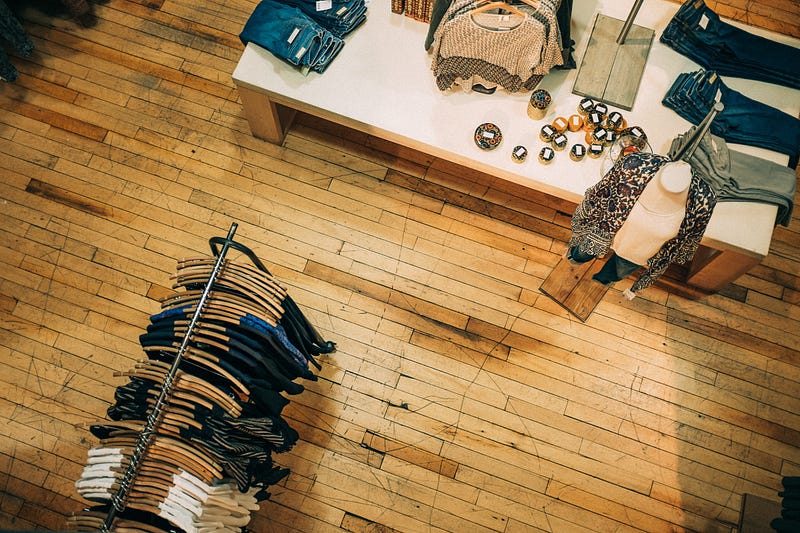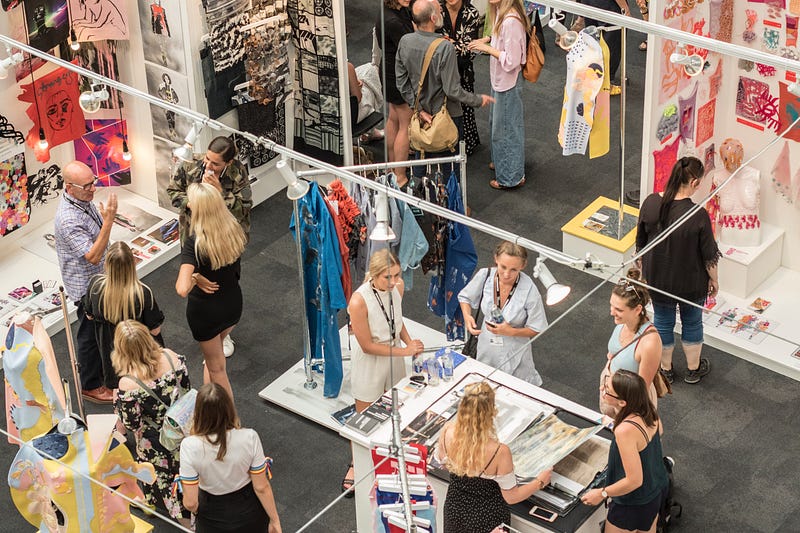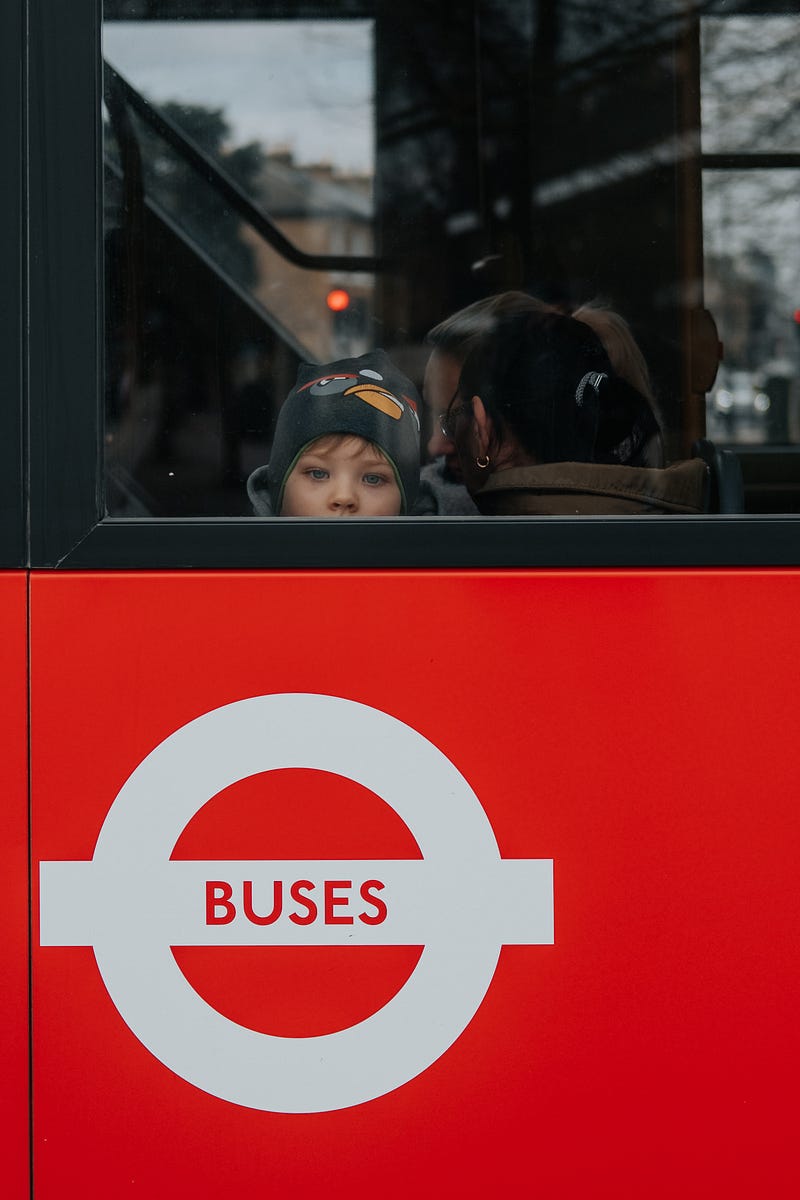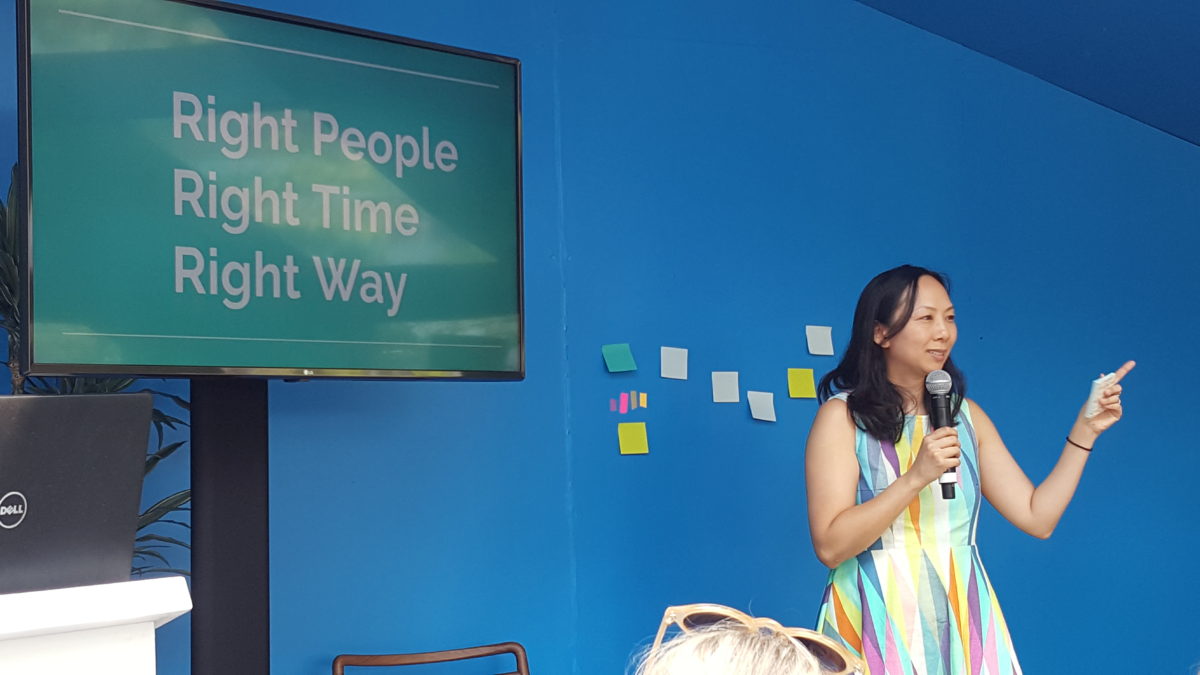Are you human? This is the provocative question of Charlene C. Lam who helps creatives and designers showing and selling their work. We talked with her about the future of retail and how to sell creative and sustainable products. Being human is part of the answer but there is much more that emerges in this interview in which we talk about the power of pop-up shops and about how to create an experience from a product and make sustainability doable.
The talk with Charlene starts, and we are immediately involved in the conversation. She asks questions and the audience answers, lifting their arms as school kids happy to be part of this event and with the perception that Charlene will tailor her presentation based on the answers we are giving. And in a way she does: she listens, comments, and then she shares her experience. The audience is mostly made of designers and architects. We are at Clerkenwell design week, so this is not a surprise, but what is incredible is how many people are attending this talk and how engaged they are. It’s no wonder why. Charlene works with creatives and designers in London and NYC to help them show and sell their work, and many are attending eagers to learn more.
The title of Charlene’s talk at Clerkenwell design week is “Be Human”, which is also the foundation of her approach to the work she does with designers. When we met her, she was based in London but was about to move back to the States. We decided to get in touch with her for an interview about tips on how to sell a product and especially a sustainable product as well as how to create an experience for customers. The interview that follows was edited for clarity and shortness.
Right people, right time, right way
We start our conversation with what was also a topic of Charlene’s talk at the London design week. The philosophy of her work is to focus on targeting the right people, at the right time and in the right way. Here is how she explains the three.
RIGHT PEOPLE. “Know who your right people are. I think people who are selling something get very broad at it, and they think the product is just for everyone. But no! Even if someone appreciates it, it also needs to be someone who can afford it. So, they need to get quite specific about that.
At the RIGHT TIME. So, especially if it’s a higher price item, identify the right time and get in front of them at the right time and then show it to them in the RIGHT WAY. So, especially if it’s a hi-end item, you have to be able to convey, not just the benefits of the piece, but you have to have the right packaging for it, you have to display it in an attractive way, and I think, especially with handmade things, go a little bit crafty with the display”.

The super power of pop-up and…of whatever will come next
The focus of Charlene’s talk at London was on social media but she works also a lot with pop-up shops and installations. Over the years, there have been a lot of discussions about pop-up shops used by big brands, and the problem with growing prices of the spaces. So, we asked Charlene about them to understand how pop-ups where born, why they were so successful and what lies ahead.
Pop-up shops in London started after an economic crash. There were a lot of empty shops on the streets, so people were encouraging creatives to do something exciting. It makes sense; you have an empty shop, why not try to pop-up in there? But then it has really evolved into spaces that are just too expensive, frankly, for a lot of small designers, where it is going to cost so much to do them that it is questionable whether it would be profitable money-wise. I think now people need to be very clear about why they are doing a pop up or why they are doing anything.
Pop-up shops are just an amazing way for people to get work out of the studio and in front of actual people, actual customers, and get their reactions and see if people understand it.
I think that specially for handmade and limited-edition items, you must be able to communicate that and explain: why it is more expensive, how is it made, who made it, the materials… Designers and artist who create these objects often have a lot of assumptions. They think that people know, and people don’t know!
In the States bigger brands have gotten to pop-up shops realizing that they also could do a great use of research during them. Like Magnum. They had a big pop-up in Soho, NY where you could go and make your own flavor of ice cream. It’s actually really smart from a brand perspective because instead of doing the traditional survey or samples, in the pop-up they could actually test an idea in real time and see what flavors people are asking for, what combination they are making… They are crowdsourcing their next product lines. That’s the nice thing about pop-ups from a small designer stand point as well.
What I think London has experienced in the last couple of years is a kind of pop-up fatigue. Because when pop-ups first started, it was just exciting. It was enough to be a pop-up. You would get press coverage and people would stop there just because it was a pop-up. Then it became so common that people would say oh, no, it’s not enough to be a pop-up. Now it needs to be a certain kind of pop-up. But I think part of it is just what we call it.
Even if we don’t call it a pop-up shop, the idea, the essence of a pop-up being something that is available for a limited time, new and special, something that is ahead of what is in standard shops, I think those aspects carry through, even if the so-called pop-up trend starts to go away.
I don’t think I have a crystal ball for the crisis of retail, but I don’t think it is dead. I think the big retail shops don’t move fast enough which is why they are suffering. And the reason why pop-up shops have been attractive and why they work is because they are more responsive to what people need: they create excitement, they are able to move faster, and they are able to change their selection as well whereas traditional retail gets stuck into such a long cycle that they can’t anticipate.
Experience and human contact
So, if the key to pop-up lies in their being more responsive to people needs, I asked Charlene about the next step and where we should focus as creatives trying to sell our work and as designers. What is the key for the future? Technology? Marketing? Yes, but not only. The answers go back to being human and maybe going back to the basics of her approach: purpose and people.
I think it’s this idea of user-centered design that has been used in more digital kinds of approaches. And it needs to go down into actual physical products and in retail. It’s not a team that is making things and popping them into the shops when they are done. It’s more integrating actual users’ needs into the designed product and into the production process so that they can better anticipate what people want and how they want to buy it. I think social media probably plays a big part in that and helps people to anticipate a bit more the trends that are coming up.
All these exciting things are coming up in retail: all these interesting technologies. I’m not such a big fan of virtual reality, but I think augmented reality has some really interesting potential. And at the same time, we’ve got all this tech in our phones and in our lives, and people are a bit overwhelmed. So, it’s coming back to being human again. It’s going back to the fact that as humans we want to experience things.
The core of why we buy certain things is still about emotions and how it makes us feel: the experience that we get, and the space in which we buy it.
A lot of independent stores are going to have a hard time, not just pop-up shops, and I think that, part of it, is that they need to focus more on thinking about themselves as experiential retail that provides a customer service that the big brands can’t. They provide the human contact that Amazon can’t. And I think in some ways all retailers need to think about themselves as experiential retailers, and that’s not just about product selection, it’s about a whole experience from start to finish.

So, if we all must become more like experiential retailers, we asked Charlene about the process that one should try to follow to build an experience based on his or her product. Where should one start? What are the questions that we should be wondering about to create an experience from our products?
I would start with why somebody wants to buy this? Going back to the right person, right way and right time. Do they buy it for themselves? Do they buy it because they are happy? Or do they buy it because they are sad? Do they buy it when they want to feel calm? Or do they buy it when they want to feel excited? And you kind of start to paint the picture of the kind of environment that suits a certain product and a certain person at a certain time.
And then there is the classic thing when somebody buys something: what’s the fantasy? What image of themselves, what image of their lives are they buying into and how you are going to get indicators for that in the environment and in the experience. So, are there plants? How is the lighting? Do we have lots of colors or neutral colors?
And then the other aspect is practical: the very practical aspects of — if it’s fashion — that it should be easy for people to try them on and to see themselves in it. And if it’s something else like jewelry, how do you explain it? How do you make it accessible? Even with things like ceramics: How do we make it not so precious looking that people are scared to touch it? But then also you don’t want to make it so accessible that it could break. So, it’s really mentally walking though: I’m the person coming to the space. How am I physically walking through the space? how am I picking something up? It’s really just the classic thing of becoming the customer.
Making sustainability doable
From our experience, and the one of our customers with our ECONYL® regenerated nylon, we feel there is a topic which is even more challenging to explain to final consumers: the sustainable features of a product. Sustainability is a delicate topic to explain and often it’s done with a very complicated language and with negative tones. So, we turned this problem to Charlene to hear what her suggestion on this are. Could pop-up shops be a solution to these difficulties and how?
I think definitely, because pop-up shops allow you to have conversations. So, it’s actual humans talking to other humans. It’s not an AD talking with an individual.
You can have real conversations, and people can ask questions. You can challenge people’s assumptions in a friendly way because you would assume people are going to get what sustainability means, but no!
It means different things to different people. So, I think pop-up shops are a place to have conversations and to answer questions. They are so valuable to cut though just hype and sustainability speak. And also, you can touch things and realize that they feel nice and look good and can actually integrate sustainability in real life.
Sustainability is more front of mind for a more general audience which really helps, and I think there has been an evolution in how it is presented. I remember when recycled products were all beige and gray and uncomfortable and scratchy. So, we have made huge steps in that. Now we are at the point when we can point at one thing and say. This is beautiful AND sustainable, and it’s made from 50% post-consumer waste. It’s not having to choose between the aesthetics and the ethics of it. So, I think my advice is about values and about conveying that. Of course, you can appeal to people’s values when you deal with conscious consumers who are willing to pay more for ethical products. So, one level is appealing to their values in this way, but then the other, which I think we can do a better job of as designers, creators and as makers, is conveying the value and the marketing aspects of it. Again, with independent makers it is not enough to say, “I made it and that’s why you should buy it”. There is an aspect of that. Or “it’s made in Britain, and that’s why you should buy it”. Well, there is an aspect of that that is appealing to people’s values. But I think we can do a lot better to explain what’s the value to the larger economy, to the country but also to the customer individually.
So, it’s about being more transparent about what you are actually saying and not just appealing to value but articulating the value.

Is there a place also for social media in sharing these sustainability values?
The magic of social media is that they are so good at spreading ideas quickly, right? There have been times when people have said: “Oh, yes, I want to be more sustainable, but I want to have a modern life; I don’t want to move in a yurt.” So, when you see examples of sustainable lifestyle and people using green products on your Instagram feeds and on other social media, you can check how other people are integrating it into their lives and their businesses. It really helps to kind of introduce that idea that is doable for people. You don’t have to be a specialist.
We asked Charlene if influencers are part of this process and might be key to show how sustainability can be integrated in real life. For sure they are part of it, she says, but she believes today we are all influencers. And she explains to us as an example, the influence that a friend of her on Instagram has had making her to think about the use of disposable plastic bottles.
“She is not like a social media influencer, but she is influencing my life. So, we can all take more responsibility for being influencers”.
Creativity will save us as individuals and as a society
During our conversation we also talked about creativity and design and how they can save us and open the doors to a more sustainable future. Charlene told me that part of her philosophy is that creativity will save us as individuals and as a society. So, as a last question we asked Charlene about her biggest source of inspiration.
It sounds cliché but it’s SEEING THINGS: travelling, but also putting away my phone when I’m going from one place to another. I really encourage people, especially those who are interested in pop-ups, to look out the windows! This is your neighborhood, and when you stare at the window, suddenly you see: an empty shop, an interesting space for a pop-up, a group of people on the street, a new café, a certain trend emerging, interesting behaviors and, of course, the visual inspiration as well. I love cities because of that. A city to me is a living gallery, and every time I look out of the bus window, every time I look around walking, I see other connections; I see contrast, and I see patterns. So, yeah, observing the city and observing people.
Again, going back to human! That’s Charlene!

